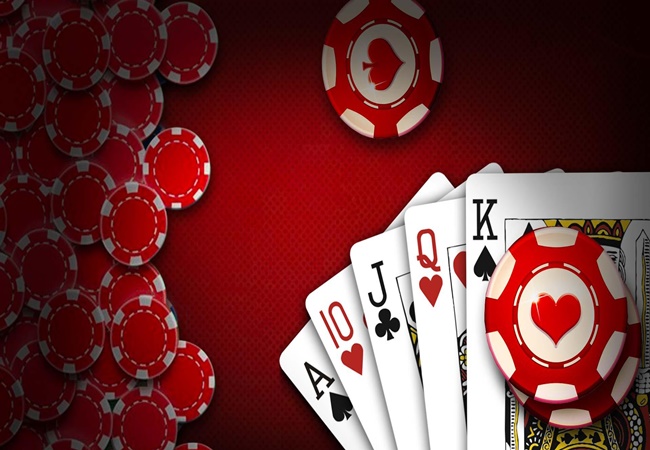Exploring the Cultural History Behind Teen Patti
Teen Patti, also known as Indian Poker, is more than just a card game — behind Teen Patti lies a cultural phenomenon deeply woven into the social and traditional fabric of South Asia. Popular across India, Nepal, and parts of Pakistan, Teen Patti has evolved from a simple gambling pastime to a symbol of festivity, bonding, and tradition. But how did this humble game come to occupy such a prominent place in South Asian life? To understand this, we must journey through the corridors of history, trace its origins, and delve into the cultural significance that has helped Teen Patti and Rummy games thrive across generations.

Origins and Historical Roots
Teen Patti, which translates to “three cards” in Hindi, is believed to have originated from the British card game Three Card Brag, which was introduced during the colonial era. As the British East India Company established its influence in India during the 18th and 19th centuries, many Western customs and games found their way into Indian society. Three Card Brag, a gambling game popular among British aristocrats, soon morphed into a local variant adapted to Indian preferences and sensibilities — behind Teen Patti.
However, India already had a rich tradition of gambling games long before colonial contact. Ancient texts like the Mahabharata depict gambling scenarios, such as the infamous dice game that led to the exile of the Pandavas. Card games were also popular in royal courts, especially during Diwali — the festival of lights. It was believed that playing games of chance during Diwali would bring prosperity and luck in the coming year, a belief that still persists today. Teen Patti Stars, therefore, was quickly absorbed into this context, merging British influences with deep-rooted Indian traditions.
The Role of Teen Patti in Festivals and Family Gatherings
Behind Teen Patti’s popularity skyrockets during Diwali, when homes across India host family get-togethers and friendly gambling sessions. These sessions, often played with coins or modest cash, are more about bonding and laughter than serious betting. The game brings together people across generations, from teenagers trying to bluff their uncles to grandparents reminiscing about their own youthful games.
What makes behind Teen Patti unique is how it transcends economic, geographic, and cultural boundaries. Whether in a posh Mumbai apartment or a rural village in Uttar Pradesh, the rules remain the same. It’s a unifying ritual — one that celebrates not just chance, but community, storytelling, and fun. Diwali parties featuring Teen Patti are rich with food, music, and shared stories, reinforcing familial ties.
Regional Variants and Local Flavors
As Teen Patti spread across the Indian subcontinent, regional variations developed, each adding its own twist to the classic format. Some popular variations include:
- Muflis: Where the weakest hand wins, turning the game on its head.
- AK47: Cards with A, K, 4, and 7 become wild cards.
- Joker: One or more cards are declared wild cards before the game starts.
- 999: Players aim to get a hand closest to 9-9-9.
These variants reflect the creativity and adaptability of Indian culture. Just as Indian cuisine adapts to local spices and ingredients, behind Teen Patti evolves according to regional taste, ensuring its relevance and freshness.
Behind Teen Patti in Popular Culture
Teen Patti has made its way into Indian cinema and media, with scenes of a Teen Patti party further embedding it into the national psyche. Bollywood films like Teen Patti (2010), starring Amitabh Bachchan and Ben Kingsley, have attempted to portray the high-stakes and psychological intricacies of the game. Countless other films include scenes of Diwali games or dramatic confrontations over a round of cards, reinforcing behind Teen Patti’s symbolic weight as a marker of both luck and risk.
The game has also transitioned smoothly into the digital age. With the rise of smartphone gaming and social apps, online Teen Patti platforms now boast millions of users. These platforms allow friends and strangers to play in real time, simulating the lively feel of a home game while making the game accessible to a global Indian diaspora. From Silicon Valley to Sydney, Indians abroad are finding ways to reconnect with their cultural roots through online Teen Patti.

The Psychology and Social Dynamics of the Game
At its core, behind Teen Patti is a game of skill, bluffing, and perception. Unlike pure gambling games based on chance, Teen Patti offers players the thrill of reading others — watching for tells, hiding emotions, and making strategic bets. In many ways, the game mirrors life in Indian society, where navigating complex social dynamics is a daily skill.
Online Teen Patti also challenges societal hierarchies — in a game setting, anyone can win. A teenager can out-bluff an elder, or a newcomer can surprise seasoned players. This temporary upending of roles is part of the game’s charm and makes it a democratic social space.
Cultural Significance Beyond the Cards
Behind Teen Patti isn’t just a game; it’s an event. It is a form of storytelling, of social commentary, and sometimes even silent rebellion. In traditional households, where norms may be conservative, the card table becomes a space of relaxation and informal freedom. It is here that jokes are cracked, secrets are shared, and alliances are formed.
In urban settings, behind Teen Patti night is often the centerpiece of festive house parties. It’s accompanied by themed decorations, music playlists, and gourmet snacks. In this way, behind Teen Patti becomes a multi-sensory experience — one that engages taste, sight, sound, and touch, forming lasting memories.
Criticism and Controversy
Despite its cultural importance, behind Teen Patti is not without controversy. Critics argue that it promotes gambling, especially among the youth. In some cases, what starts as innocent fun can escalate into serious financial loss and addiction. Some states in India have placed restrictions on real-money gambling apps, leading to debates about regulation and digital ethics.
However, many defenders of Teen Patti emphasize the distinction between casual play and professional gambling. Just as poker in the West has respectable tournament circuits and social players, Live Teen Patti too can be played responsibly within safe and consensual settings.
Conclusion: A Game for All Seasons
Behind Teen Patti has endured not just because it is fun, but because Teen Patti variations adapt, reflect, and amplify the values of the culture they belong to. It is a mirror to Indian society — full of contradictions, surprises, strategies, and emotional highs and lows. From colonial drawing rooms to village courtyards, from Bollywood sets to smartphone screens, Teen Patti has carved a space in the Indian heart.
It is a game that teaches us about risk, reward, and relationships — and reminds us that sometimes, the best hand is the one you play with confidence, regardless of the cards you’re dealt.
Let me know if you’d like this formatted differently or if you want it adapted into a speech, blog post, or presentation!







